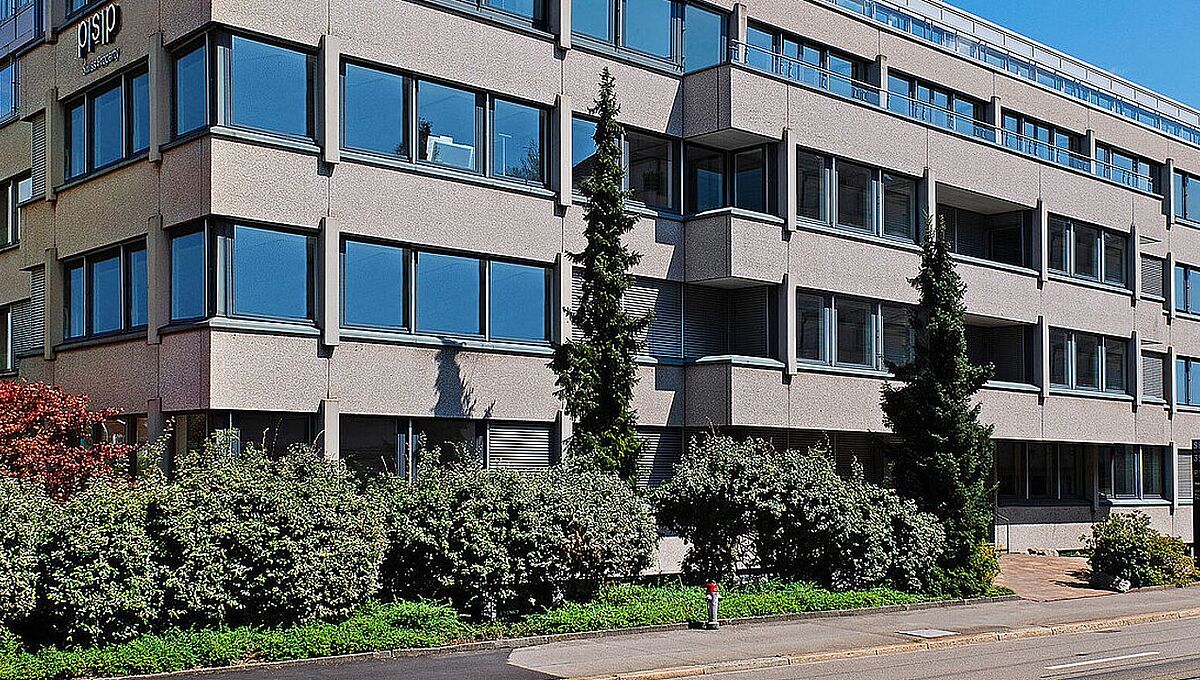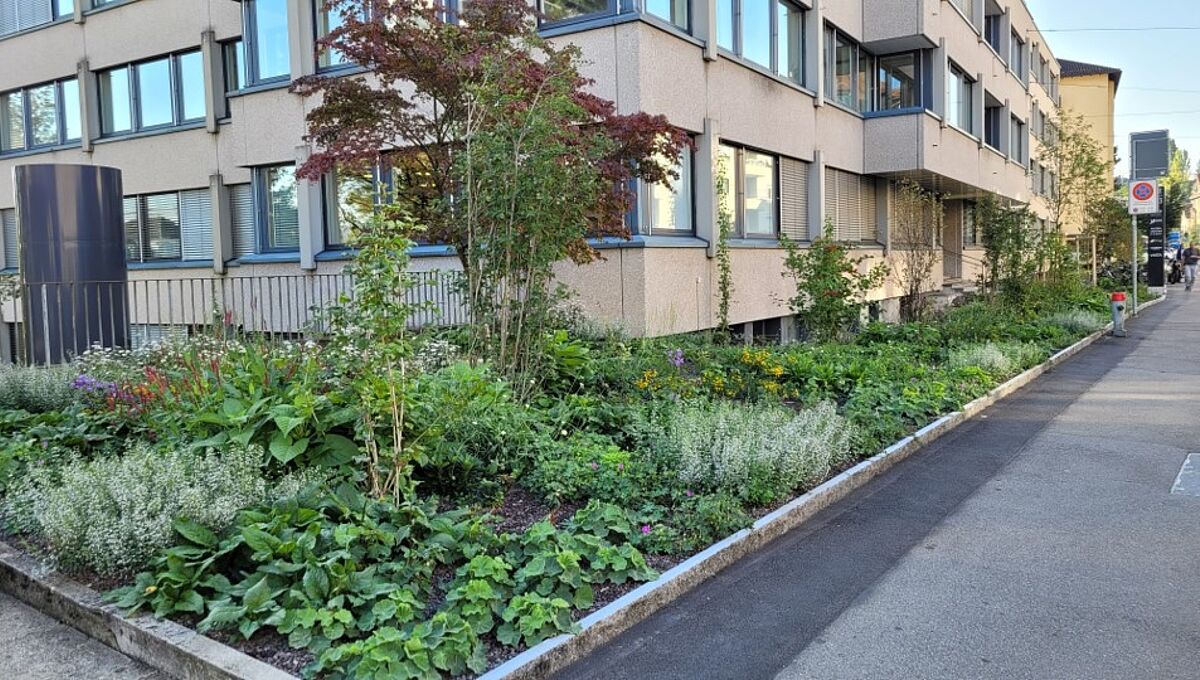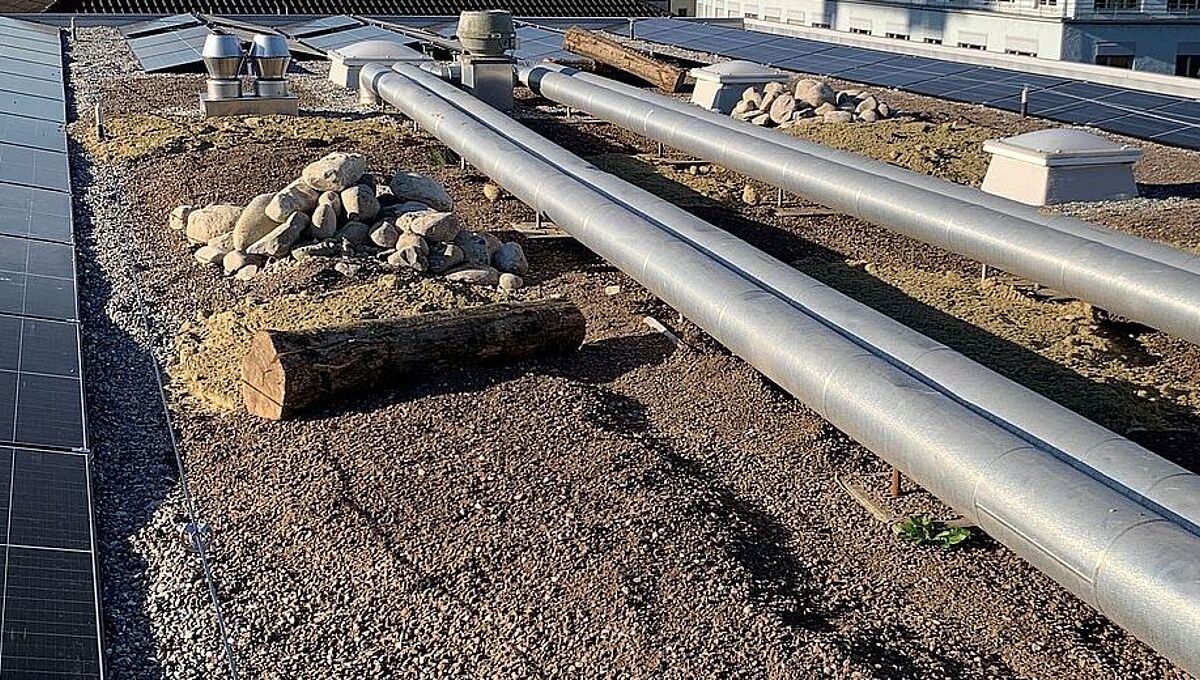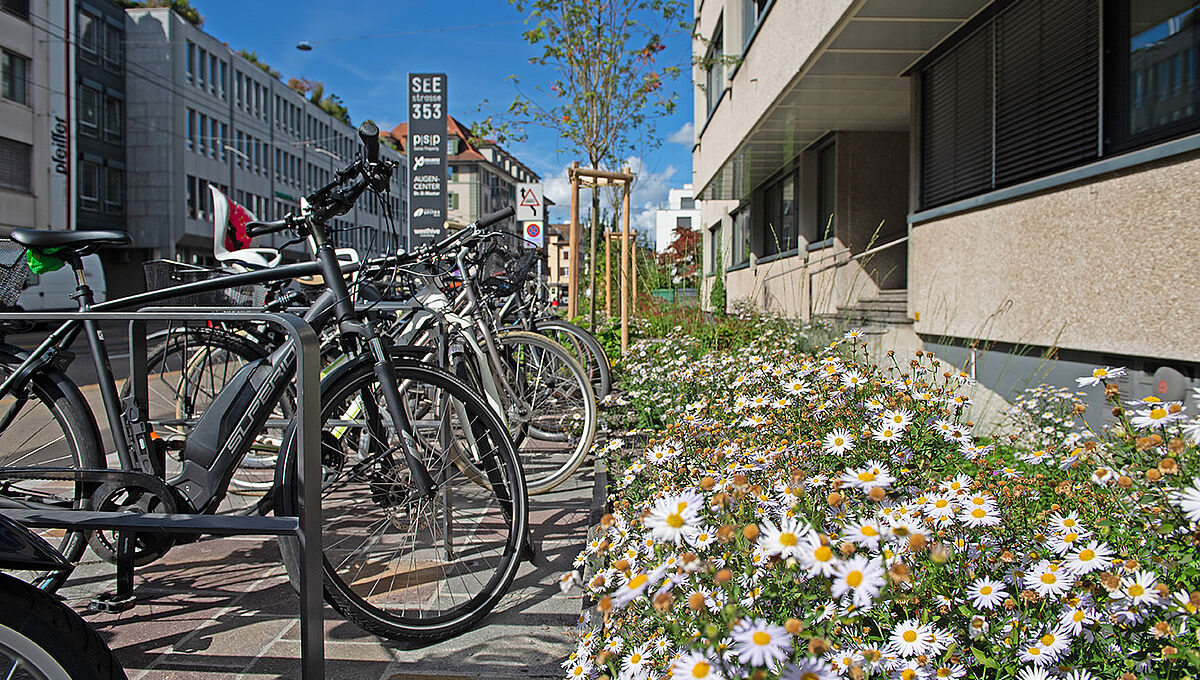That means creating 225 hectares – 300 football fields! – of structurally rich and diverse habitats for native species. To achieve this goal, the city needs the support of other property owners such as institutional owners, building cooperatives and natural persons. Incentives are created via the works of reference and the 2024 funding programme. Advice, the transfer of knowledge and financial support will motivate owners to install heat-reducing and ecologically valuable measures on ground surfaces and roofs and to implement façade greening.
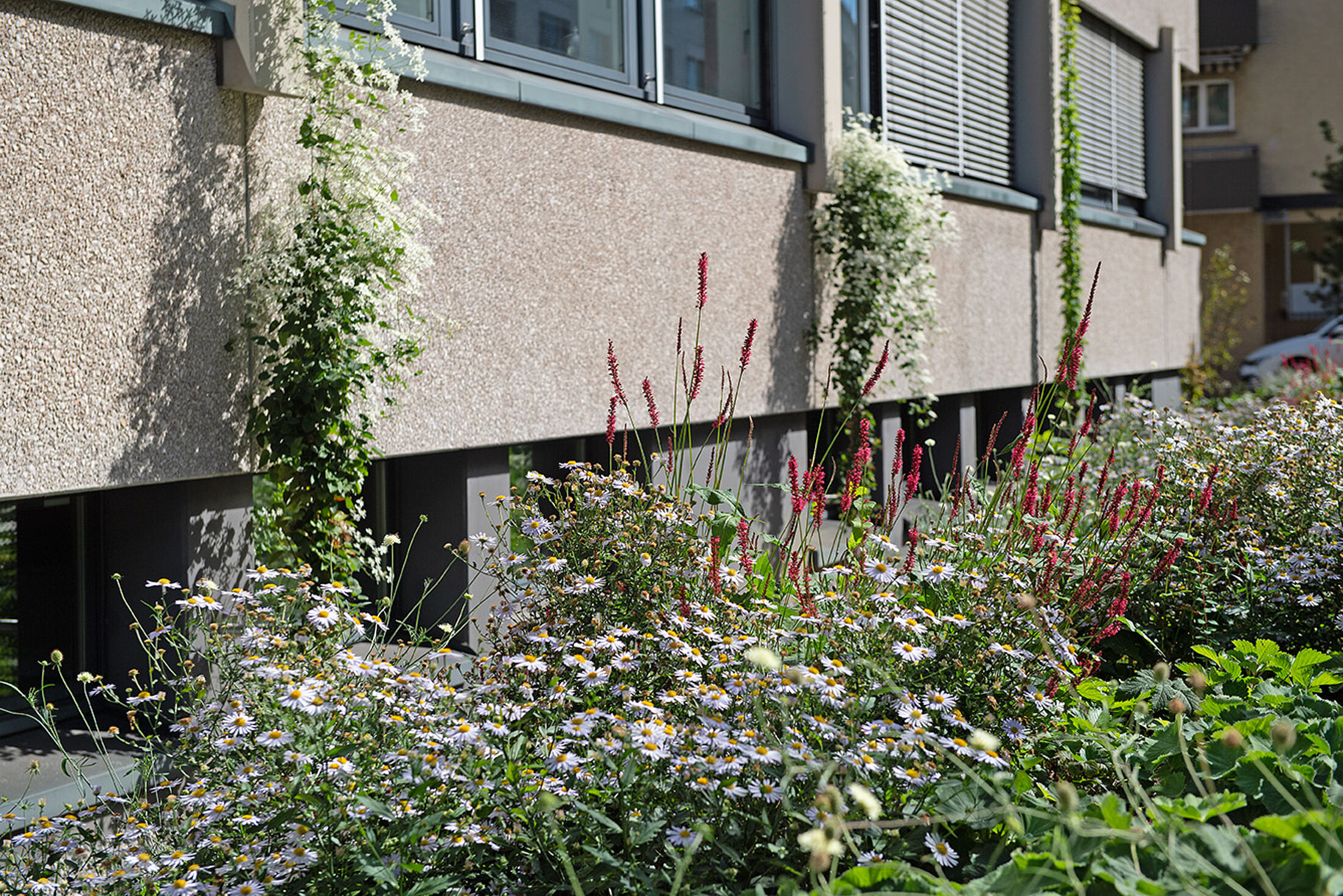
@PSP – Issue 9, February 2024
Biodiversity and greening success factors
On 15 January 2024, another PSP Academy event took place over lunch at the Collaboration Lab in the Zurich office. The event focused on goals, challenges and solutions relating to the greening of surrounding areas, roofs and property façades.
The talks by Michael Hagenauer (Project Manager at Grün Stadt Zürich), Sebastian Meyer (Project Manager at the landscape architecture and environmental planning office planikum) and Thomas Kraft (Asset Manager at PSP Swiss Property), offered exciting insights into the world of greening and biodiversity to the roughly 70 employees who attended the event in person or virtually. The event was kicked off by Agathe Bolli, Sustainability & Communications Manager at PSP Swiss Property.
Text: LST AG and Agathe Bolli. Photos: Urs Pichler, planikum ag, PSP Swiss Property AG
Ecological improvement of the surrounding area
We strive to better exploit the potential for promoting biodiversity by ecologically improving the areas around our properties – and, where possible, the terraces, façades and roofs. The long-term goal is to contribute to improving biodiversity and counteracting unwanted heat islands within the city. (PSP Annual Report 2022)
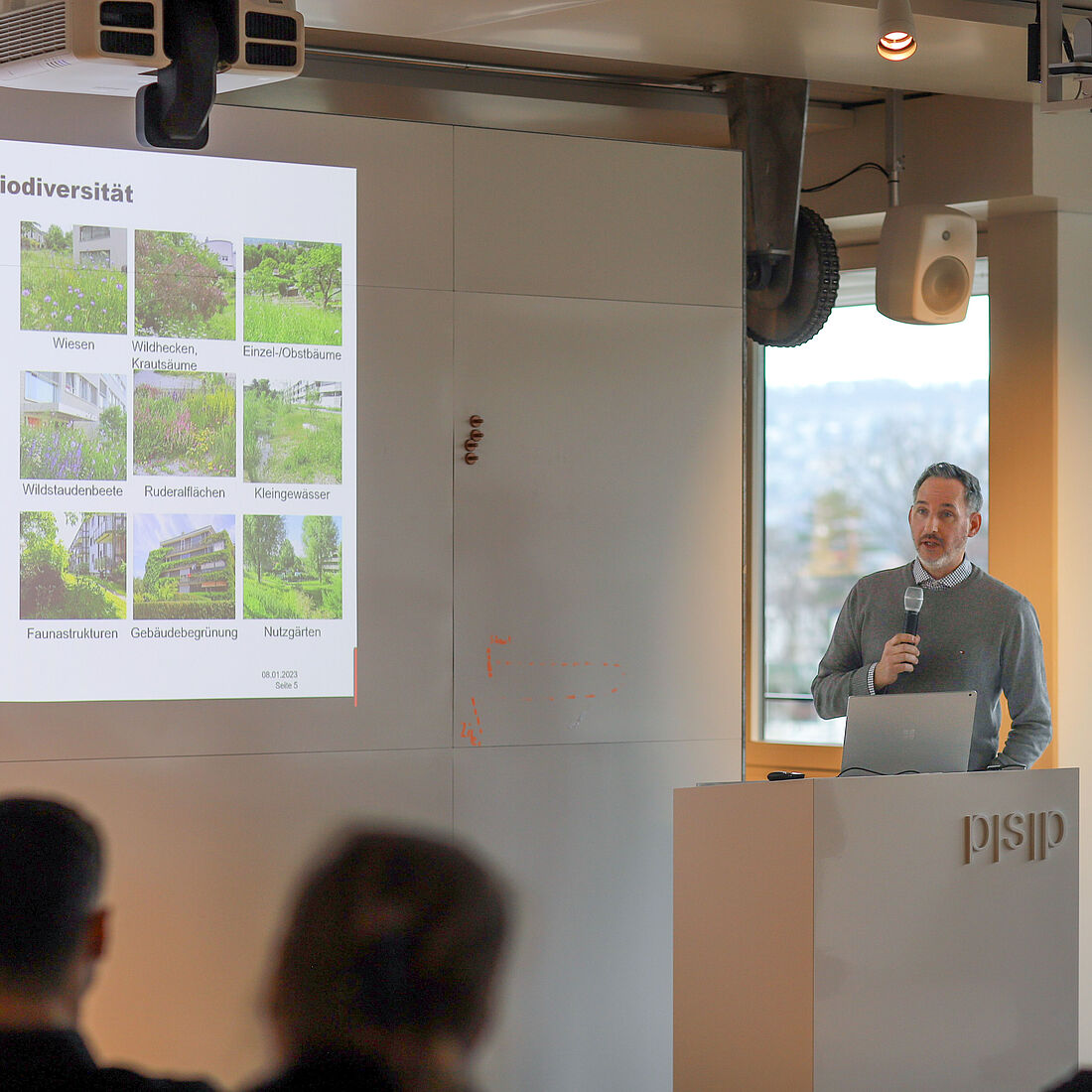
Less heat and more living space for plants and animals
According to the first speaker Michael Hagenauer from Grün Stadt Zürich, the city of Zurich aims to give 15 percent of the settlement area an ecological makeover by 2040.
Hagenauer used successful examples to illustrate how exactly this would look. These included the greening of the façade of Hotel Alma on Mainaustrasse, the unsealing of Josefhof on Josefstrasse into a green recreation area and the conversion of a gravel roof in Höngg. The ecological enhancement there allowed an inanimate roof with temperatures of between 60-80 degrees on the roof waterproofing in summer, to be turned into an ecologically valuable habitat for insects, as the temperatures on green roofs rarely rise above 35-40 degrees.
Image boost with a feel-good factor thanks to professional greening
Sebastian Meyer from planikum used the measures for promoting biodiversity at the PSP office in Zurich to show how one can approach such a project, what the challenges are and how to achieve the goals set by the customer.
Objectives of PSP Swiss Property:
- The Zurich office at Seestrasse 353 serves as a showcase for the tenants. The greening should be inviting and enhance the surrounding area.
- The greening project with a special focus on biodiversity is intended to serve as a template for further environmental work in the PSP portfolio.
“We start”, says Meyer, “by performing a site analysis, which shows the customer their options.”
In addition to the current ecological value of the building’s surrounding area – which is rather low – nature-related merits in the area were also analysed, such as nesting locations for swifts, the prevalence of animal and plant species that are relevant for environmental structuring, and the presence of dispersal axes.
The enhancement concept based on this includes planting native plants and providing ruderal areas for pioneer vegetation. The result contributes to biological diversity as well as creating an inspiring and calming ambiance for the users of the property and passers-by.
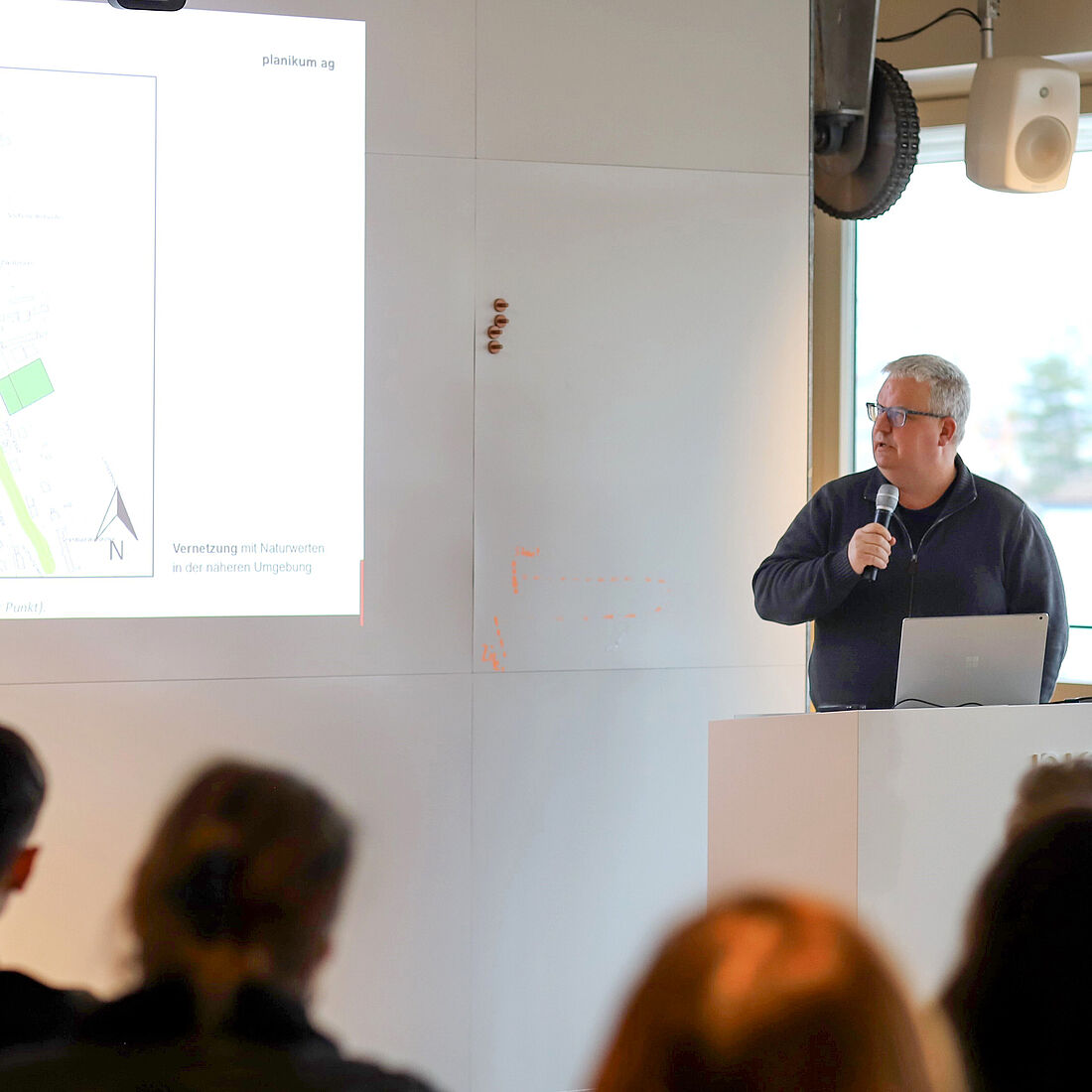
Building blocks for promoting biodiversity (on and around the building)
- Roof greening, biodiversity roof, green energy roof
- Façade and wall greening
- Preserve old trees and plant new trees
- Wild shrubs, wild perennials and hedges
- Flower lawns and flower meadows
- Ruderal areas (fallow areas)
- Paths and squares that are permeable and can become vegetated
- Wetland areas and ponds
- Retention basins and infiltration areas
- Vegetable garden, raised beds
- Nesting aids for bats, swifts, songbirds, wild bees, etc.
- Small structures made of wood and stone
In addition to the high costs, restrictions often arise relating to building permits or neighbouring users (e.g. SBB) and nature conservation organisations that set barriers. Meyer specifies the factors that lead to success as “understandable concepts, a good project team and a lot of experience”. These help to skilfully combine design and usage requirements with the biodiversity promotion objectives, which means that the measures can be modularly scaled to other properties.
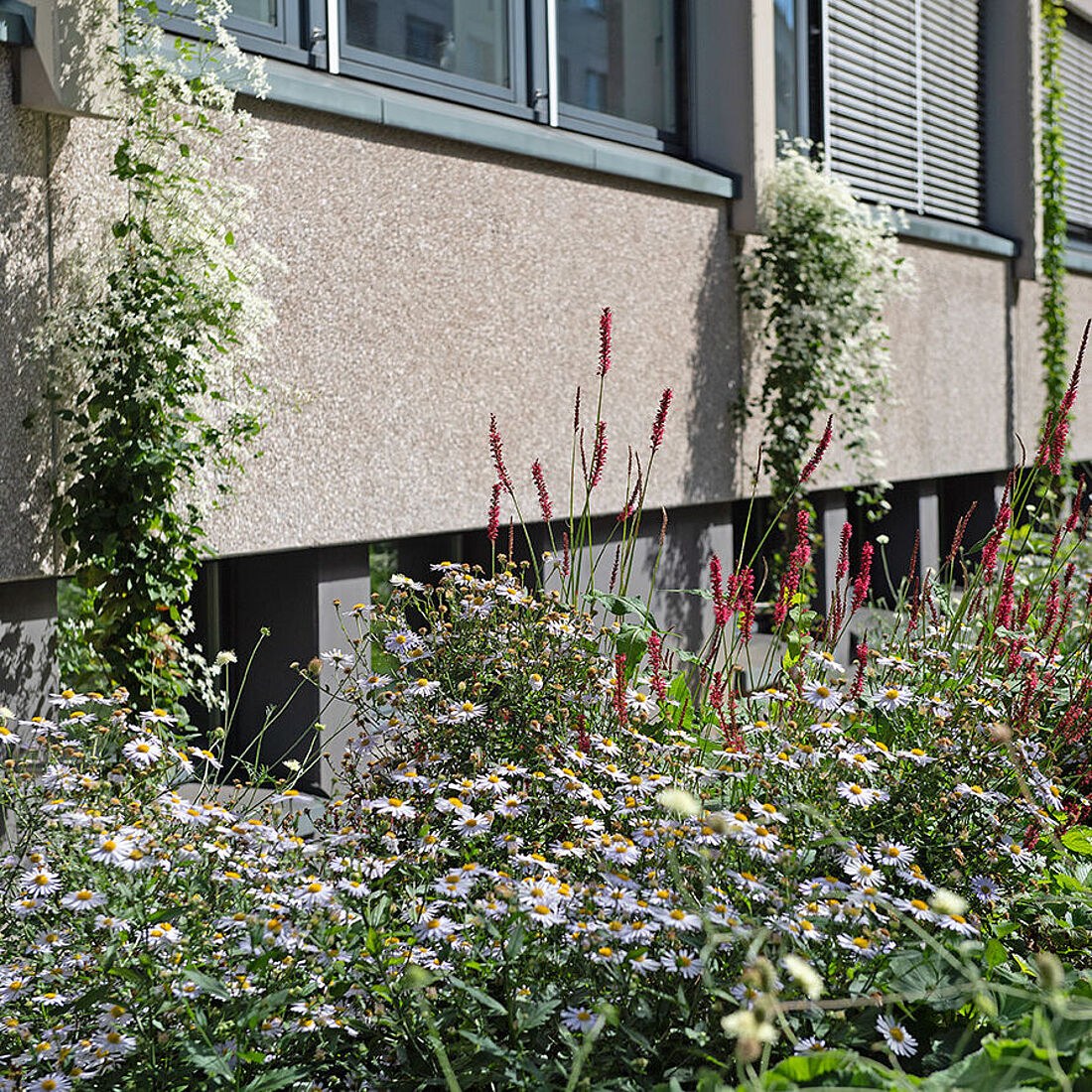
Easier renting after greening
“The appearance of our property is in our hands from the plot boundary onwards.” These were the words of Thomas Kraft, Asset Manager at PSP Swiss Property, who demonstrated examples of biodiversity promotion by showing PSP’s own properties.
The Zurich office was transformed from an “uninspired, monotonous and uninviting ecological desert” into a visual feast for humans and a new habitat for plants and animals. Thomas Kraft points out that a third of the animal and plant species assessed in Switzerland are at risk of extinction. We can counteract this risk with such projects.
According to Kraft, the challenge involved in greening PSP properties, most of which are in cities, is “the limited outdoor space and exacting tenants”. It is also important to develop an understanding of the aesthetics of a natural environment and pass this on to property managers, caretakers and tenants. Kraft used examples to show that successful biodiverse greening is possible. The greened roof terrace of the Atmos property in Zurich is very popular with users as a place to enjoy lunch or as an extended workspace. Another example is Förrlibuckstrasse 10 in Zurich, where the Wädenswil perennial mixture “Summer wind” (ZHAW) was used, conjuring up a new appearance every season. According to Kraft, the cost of maintaining such mixed plantings appears to be similar to that of conventional environmental design.
«In 2011, the vacancy rate for the property at Förrlibuckstrasse 10 was 35%. It dropped to 2% following the redesign in 2014.» Thomas Kraft, Asset Manager bei PSP.
Kraft invites employees with definite, department-specific information to consider more ways to promote biodiversity in their area and implement measures.
Exploit potential
The talks illustrated that biodiversity and greening not only create beautiful sights and image boosts, but also have a direct impact on good rental rates and thus on business success. What’s more, a green, biodiverse environment not only creates a greater sense of well-being for employees and visitors, but also new living spaces for animals and the opportunity for plants to grow better: there is a wealth of great reasons for PSP employees to take this advice to heart.
